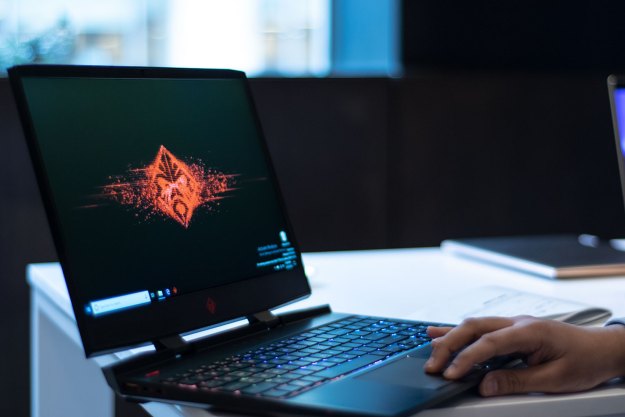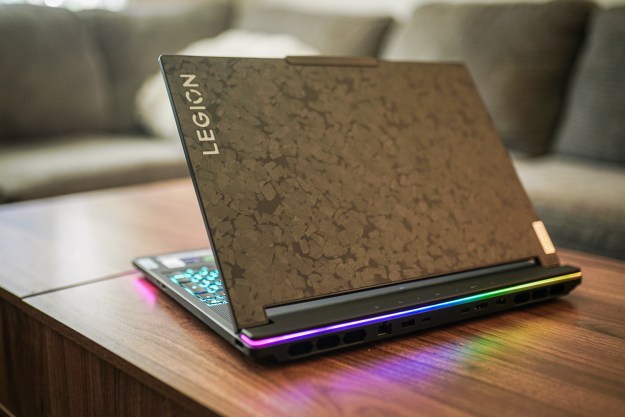
“With the latest Nvidia graphics, and a 240Hz display, the Omen 15 wants to be the new king of high-performance of gaming.”
- Options for latest Nvidia graphics
- 240 Hz display with a 4ms response is another first
- Great port selection
- Redesigned thermal system
- Fast, six-core processor
- Same old design
- Models with new display not available until July
Many consumers often associate the best gaming laptops with brands like MSI, Alienware, or Republic of Gamers, but don’t forget about HP’s Omen brand. Ever since 2014, its Omen laptops have enticed gamers with thin bezel displays, powerful graphics, and affordable prices.
Now comes the 2019 Omen 15. With new features like the latest Nvidia graphics cards, a whopping 240Hz display with 4ms response times, the Omen 15 looks to make some noise and disrupt the gaming laptop market.
Plenty of power inside with NVIDIA’s new graphics
Throughout 2018, most
For 2019, the Omen 15 picked up the option for Nvidia’s latest-generation graphics. The desktop versions of these received big hype and moving it to
More CES 2019 coverage
- HP’s new Chromebook 14 comes with AMD inside, instead of Intel
- AMD claims its Ryzen 3000 mobile chips let you have fun faster
- HP’s new Chromebook 14 comes with AMD inside, instead of Intel
The latest GeForce desktop
With all that graphics power inside, we were a bit worried about the cooling on the HP Omen 15. We did notice something that caught our attention, even in just our short amount of time with the device. When we opened web pages and multiple programs on our demo unit (with Intel Core i7-8750H processor and GTX graphics), the laptop got noisy, the fans spinning up a bit prematurely. That’s not what you want in a
HP says it has redesigned the thermals to accommodate the new Nvidia’s latest graphics, so we’re hopeful that these redesigned thermals means properly-cooled internals and less fan noise. We’ll have to wait and see.
A display that will light up your games
The move up to latest Nvidia graphics is a big jump for the HP Omen, but so is an important change to the display. It now comes with an option for a 240Hz display with a 4ms response times. This is rare in a

Overall, the 240 Hz display promises gaming monitor-level quality. It should mean for a noticeable change in perceived sharpness in games like Battlefield V and can also lead to less screen tear and reduced lag while gaming. Very few games might even actually support this or go up to high level of framerates for such a screen. However, it seems promising, especially if the latest graphics can push framerates higher than we’ve seen in the past.
Again, our hands-on unit wasn’t equipped with the 240Hz display, and we weren’t provided details on which configurations of the Omen 15 will come with it. HP told us that models with the display will be shipping in July. Some of the configurations will also support G-Sync, though again, we don’t know the specifics yet on how much that sought-after feature will cost.
Same old build and design
For 2019, the HP Omen 15 laptop looks the same on the outside, and that’s not necessarily in its favor. There are no significant changes between generations. It keeps the same ability to upgrade the RAM, and SSD, and brushed aluminum top case and textured plastic display lid. Sure, it is solid and there is little flexing, but that is now a bit outdated to slim and light
The 240Hz display promises gaming monitor-level quality.
The keyboard and trackpad on the HP Omen 15 are also unchanged from previous models. It still doesn’t feel as solid or clicky as something from an Alienware laptop, but it produces feedback that was good enough for us to speed through typing in Microsoft Sticky Notes. HP keeps to a basic island-style layout and though backlit with four lighting zones, and we didn’t find any dedicated macro buttons. That is a shame since this is a feature that gamers often look for in
Other than the keyboard, it is always nice when a
Pricing and availability
The 2019 HP Omen 15 will be available in March for prices starting at $1,370. HP wasn’t specific on which GPU this model will include but notes that it will come with “Nvidia graphics,” the Intel Core i7-8750H processor, 16GB
Editors' Recommendations
- HP launches a new gaming laptop and HyperX accessories
- Best Buy deals: Save on laptops, TVs, appliances, and more
- HP Envy deals: HP’s most popular laptop starts at $630
- Dell vs. HP: Which laptop brand is best for your needs?
- MSI just went hard






